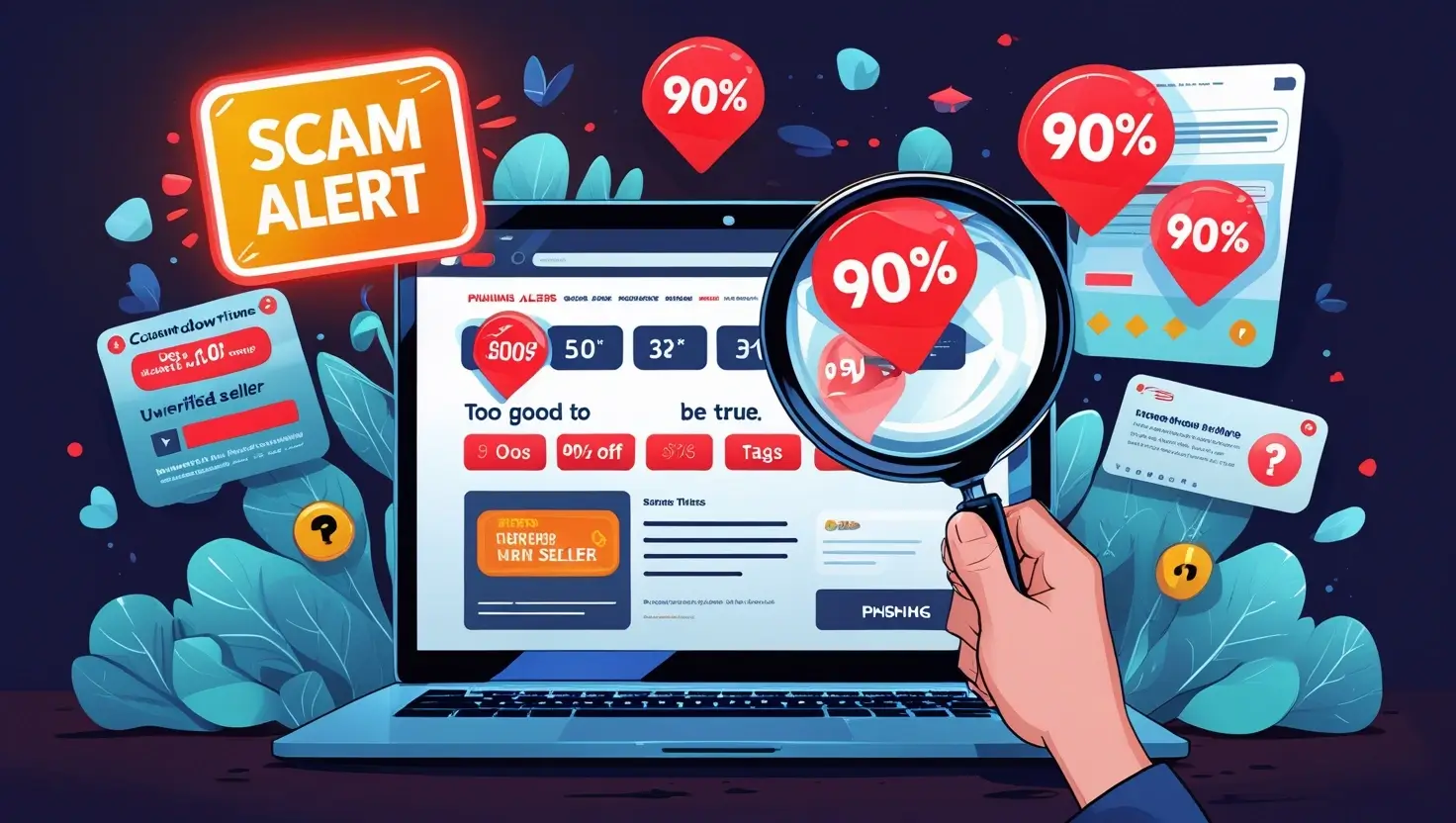
Online shopping has made it easier than ever to grab
discounts and exclusive offers. But with the rise of e-commerce has also come a
rise in fake deals—offers that are misleading, exaggerated, or even
completely fraudulent. If you've ever wondered whether a deal is real or just
clever marketing, you're not alone.
In this blog, we'll break down five major red flags
to help you spot fake deals instantly and protect your wallet.
You visit a website, and it flashes a warning: “Only 2 hours
left to grab this 75% discount!” But when you return the next day, the same
timer is counting down again. This is one of the oldest tricks in digital
marketing.
Why it’s a red flag:
Fake urgency creates pressure to buy without thinking. A real
deal often has a published expiration date, not a recycled countdown timer that
resets for everyone.
Tip: Open the same page in a private/incognito
browser window or on another device. If the timer restarts, it’s probably fake.
If you find the latest smartphone or designer handbag for
80% off, take a moment to pause. Deep discounts on popular or newly released
items are rarely real.
Why it’s a red flag:
Scammers use unrealistic deals to collect payments or personal
data. They know shoppers are drawn to name-brand items at bargain prices.
Tip: Compare prices across trusted retailers. If only
one site is offering such a deep discount, it could be a trap.
Legitimate online stores invest in clear, professional
product photos and detailed descriptions. Fake deal sites often use pixelated
images or stock photos and provide minimal or confusing information.
Why it’s a red flag:
Lack of effort in the presentation is often a sign that the
deal—and possibly the product—doesn’t actually exist.
Tip: Look for real product photos, specifications,
and customer reviews. If you can't find them, it's best to move on.
Before buying anything, scroll down and look for the site's
return or refund policy. A vague or missing return policy is a major red flag.
Why it’s a red flag:
Scammers rarely allow returns or refunds. If they make it hard to
find the policy or it seems overly strict, they might be trying to avoid
responsibility after the sale.
Tip: A clear return policy should be easy to find and
explain exactly how returns work, how long you have, and whether you’ll get
your money back.
Some websites bombard you with pop-ups offering bigger and
better deals every time you try to leave. While occasional exit pop-ups are
common, too many are a warning sign.
Why it’s a red flag:
Overly aggressive selling tactics can signal a low-quality or
untrustworthy site. Real deals don't need to yell at you to make a sale.
Tip: Trust your gut. If a site feels sketchy or
desperate to keep you from leaving, it's best not to proceed.
The internet is filled with real bargains—but also with
traps that look like them. Knowing how to spot fake deals is the key to
protecting your money and avoiding regret later. The next time you see a deal
that seems a little too perfect, revisit this list of red flags.
For real, verified deals and smart shopping tips, visit TrandyReviews where
we help you shop smarter, not riskier.